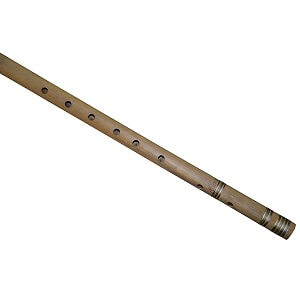Venu
 The flute is one of the oldest instruments on earth, having originated thousands of years before many modern instruments were developed. Indian flutes have been mentioned for centuries, with the first recorded instance in the Natya Shastra, the Sanskrit text on music and the arts. The venu is named as one of the three original instruments for making music, along with the human voice and the stringed veena. The venu is also the flute most often depicted in images and stories of Lord Krishna.
The flute is one of the oldest instruments on earth, having originated thousands of years before many modern instruments were developed. Indian flutes have been mentioned for centuries, with the first recorded instance in the Natya Shastra, the Sanskrit text on music and the arts. The venu is named as one of the three original instruments for making music, along with the human voice and the stringed veena. The venu is also the flute most often depicted in images and stories of Lord Krishna.
Although the venu is an ancient Indian instrument, it wasn’t until Sri Sarabha Sastri became an exponent of the flute during the late 19th century that it became accepted on Carnatic concert stages. Sri Sastri experimented with the venu and established his own playing style, which included a highly scientific fingering techniques. His vision of the venu took it from melodic folk flute to influential concert instrument.
Today, the Carnatic flute is gaining popularity worldwide. No longer only heralded in South India, the instrument’s ability to sound intricate melodies and pronounce slight nuances has made it an attractive addition to many international flutists’ repertoire. The venu can now be heard in folk, jazz, and western popular music.
The Carnatic flute, or venu, is made entirely of bamboo with a body construction of one solid piece. The size of the flute determines the key it is played in, or the specific tones it is able to produce. The longer the venu, the deeper the sound, and vice versa. Because there are not movable parts of the flute, the player is unable to affect any change in the pitch besides using breath control.